Feature
The range explained… Renault
Can’t tell a Clio from a Captur, or a Zoe from a Twizy? Don’t worry, we’ve got everything you need to know about Renault and its cars.


Words by: Phill Tromans
Published on 21 August 2018 | 0 min read
Renault is the biggest French carmaker, and creator of some of the UK’s most popular cars. Stylish design and attractive prices have earned it plenty of fans, and it produces a wide range of vehicles from everyday runabouts to big family cars and sporty hot hatches.
Renault history
The first Renault, the Type A Voiturette, was built in 1898 by Louis Renault, and the following year the company Renault Freres was founded by Louis’ brothers, Marcel and Fernand. The world’s first saloon car, the Type B, was released in 1900.
Within a few years the company had set up subsidiaries outside France, and by 1905 was exporting vehicles around the world. By 1913 it had almost 5,000 employees, and after the First World War its fortunes soared. The Second World War paused things somewhat, and the company was nationalised by the French government in 1945, but further international expansion followed and by the 1970s, Renault employed more than 100,000 people. The Renault Sport division was founded in 1976 and led to considerable motorsport success, and some very desirable road cars. Renault was privatised in the mid-90s, and today it’s setting its sights on further expansion, with China a definite target. But enough of the past. What cars does it make right now?
Within a few years the company had set up subsidiaries outside France, and by 1905 was exporting vehicles around the world. By 1913 it had almost 5,000 employees, and after the First World War its fortunes soared. The Second World War paused things somewhat, and the company was nationalised by the French government in 1945, but further international expansion followed and by the 1970s, Renault employed more than 100,000 people. The Renault Sport division was founded in 1976 and led to considerable motorsport success, and some very desirable road cars. Renault was privatised in the mid-90s, and today it’s setting its sights on further expansion, with China a definite target. But enough of the past. What cars does it make right now?
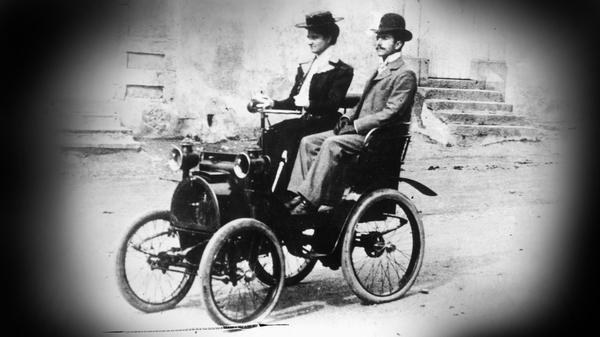
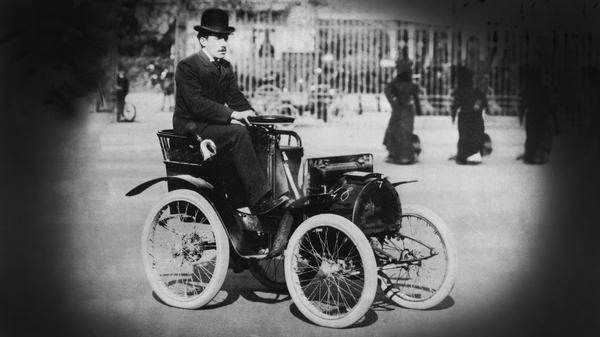
Small cars
If space is not your main concern, Renault has several machines to sort you out. The first is barely a car, in the traditional sense. The Twizy (pictured below left) is a tiny, two-seat electric city car that’s designed to whip through narrow urban streets with no noxious emissions. If that’s a bit too small, check out the Twingo, which is still small, but will seat five and has plenty of personalisation options.
If you want bigger, but still electric, take a look at the Zoe, which is Renault’s emission-free small hatchback. The next step up is the Clio (pictured below right), a badge that’s been around since 1990 and continues to win plenty of fans. The latest generation boasts stylish looks and a wide choice of trims and engines. For a mid-sized hatchback, the Megane is Renault’s offering. Like other cars in the Renault range, it features eye-catching looks and high equipment levels. It’s also available as an estate, called the Megane Sport Tourer.
If you want bigger, but still electric, take a look at the Zoe, which is Renault’s emission-free small hatchback. The next step up is the Clio (pictured below right), a badge that’s been around since 1990 and continues to win plenty of fans. The latest generation boasts stylish looks and a wide choice of trims and engines. For a mid-sized hatchback, the Megane is Renault’s offering. Like other cars in the Renault range, it features eye-catching looks and high equipment levels. It’s also available as an estate, called the Megane Sport Tourer.

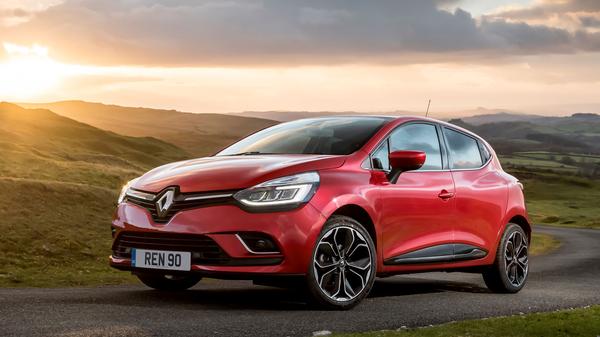
SUVs
With the world going SUV crazy, Renault has a full line-up to suit different sizes and tastes. The Captur (below left) is one of our favourite small SUVs, not much bigger in footprint to the Clio but with extra height and practicality. The next step up is the Kadjar, which shares a lot in common with the very popular Nissan Qashqai. That’s no bad thing, as it drives very well and has a cabin designed with families very much in mind.
The big SUV in Renault’s range is the Koleos (below right), which is spacious and once again boasts standout looks. It only boasts five seats though, so if you have particularly large passenger loads and want a seven-seater, you might want to consider an MPV instead. Speaking of MPVs…
The big SUV in Renault’s range is the Koleos (below right), which is spacious and once again boasts standout looks. It only boasts five seats though, so if you have particularly large passenger loads and want a seven-seater, you might want to consider an MPV instead. Speaking of MPVs…
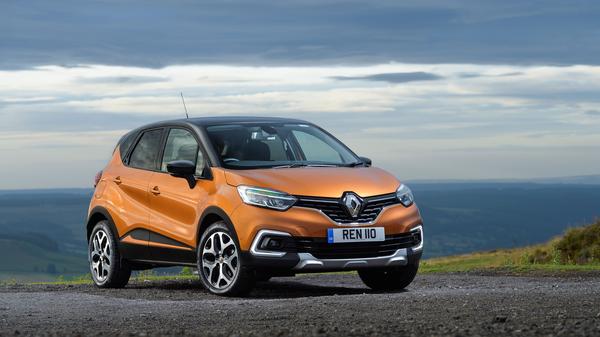
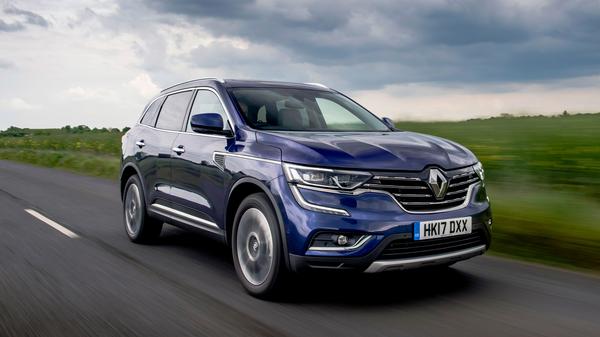
MPVs
There are two MPV (multi-purpose vehicles) choices from Renault, which may be on interest if you need extra space and/or don’t fancy the high-riding nature of an SUV. The Scenic (below left) has long been a family favourite thanks to a nicely thought-out cabin design with lots of cubby holes and fold-down picnic tables in the back. For even more space, the slightly larger Grand Scenic (below right) adds a third row of seats to let you sit up to seven people.
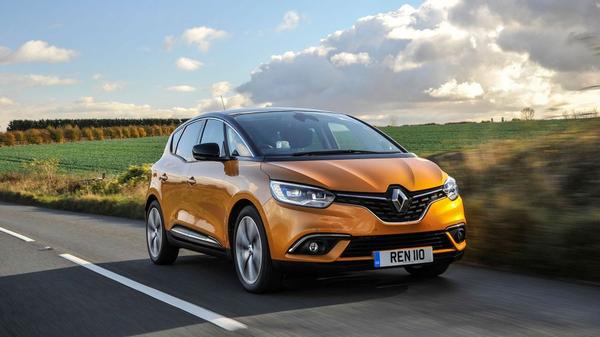
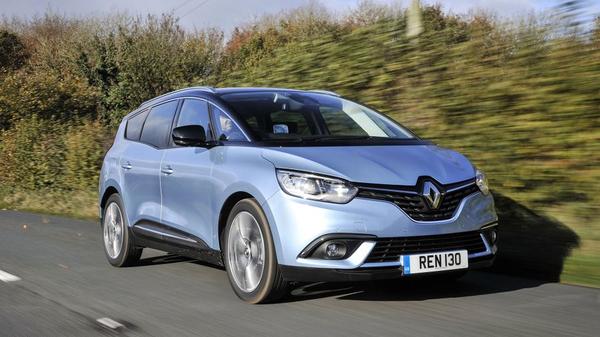
Sporty cars
Renault has something of a reputation for fun, sporty cars, and even has its own division dedicated to creating extra entertainment, called, imaginatively, Renault Sport. There’s a sportier version of the Twingo called the Twingo GT, while the Clio RS (below left) has extra power and racecar-like engineering under the surface to put a smile on your face. It's available in several different versions, with various levels of hardcore performance. The same formula has been applied to the Megane RS (below right), which boasts 280 horsepower and lowered suspension.

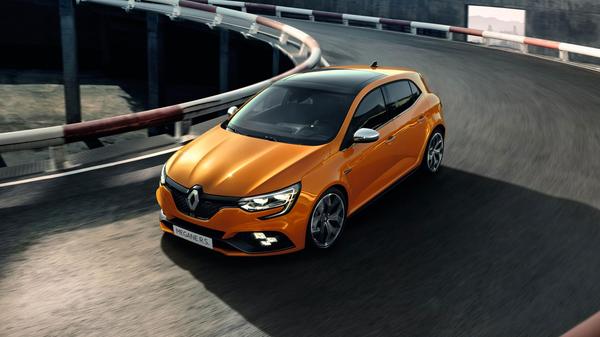
Renault glossary
Generally speaking, Renault is to be commended for keeping its range of cars impressively free from jargon. But there are always a few unusual terms that creep in, and here’s what they mean.
dCi: stands for Direct Common-Rail Injection, the name for Renault’s diesel engines. EDC: stands for Efficient Dual Clutch, Renault’s name for its dual clutch automatic gearbox. MediaNav: One of Renault’s infotainment systems, controlled via a screen in the middle of the dashboard. Features can include radio and music streaming, satellite navigation and journey information. R&Go: an app designed to help you connect your smartphone or tablet to your car. R-Link: One of Renault’s infotainment systems, controlled via a touch-screen in the middle of the dashboard. Features can include radio and music streaming, satellite navigation and journey information. R-Link differs from MediaNav by offering online features and apps. SCe: stands for Smart Control Efficiency, and is the name for Renault’s non-turbocharged petrol engines. TCe: stands for Turbo Control Efficiency, and is used on Renault’s turbocharged petrol engines.
dCi: stands for Direct Common-Rail Injection, the name for Renault’s diesel engines. EDC: stands for Efficient Dual Clutch, Renault’s name for its dual clutch automatic gearbox. MediaNav: One of Renault’s infotainment systems, controlled via a screen in the middle of the dashboard. Features can include radio and music streaming, satellite navigation and journey information. R&Go: an app designed to help you connect your smartphone or tablet to your car. R-Link: One of Renault’s infotainment systems, controlled via a touch-screen in the middle of the dashboard. Features can include radio and music streaming, satellite navigation and journey information. R-Link differs from MediaNav by offering online features and apps. SCe: stands for Smart Control Efficiency, and is the name for Renault’s non-turbocharged petrol engines. TCe: stands for Turbo Control Efficiency, and is used on Renault’s turbocharged petrol engines.